This is the time of the year when you can tell the at least semi-professional pop culture websites from the amateur ones: who’s actually out there covering the Sundance Film Festival, and who’s not. Alas, WeMinoredInFilm.com remains on the amateur side of that divide (festival passes cost between $1500-$3500!). However, reports are streaming in every day about the amazing films making their debuts, like a hilarious-sounding horror comedy (Cooties) starring Elijah Wood as a substitute grade school teacher suddenly fighting off his own students when they turn into zombies. The 2014 festival started last Thursday (1/16) and ends this Sunday (1/26). A quick glance of their websites reveals around 211 films will have been exhibited by the end of the festival. However, how did the Sundance Film Festival even start? Is it really just as simple as “Robert Redford did it”? Why do we even care about the Festival? They are far from the only film festival game in town (well, not literal town) these days.
In search of answers to these questions, let’s take a brief look at the historical timeline of the Sundance Film Festival:
September 1978 -
In Salt Lake City, Utah, John Earle (head of the Utah film commission), Sterling van Wagenen (film professor), and Lawrence Smith (local Utah filmmaker) were inspired by a film festival held two years earlier for the bicentennial. They organize a similar film festival with an American theme, calling it the Utah/U.S. Film Festival. Their big draw was 65 classic American-made films about American being shown at one theater in the span of one week. One of those movies? Robert Redford’s western Jeremiah Johnson. Redford was a chairperson for the festival, attending the first year and speaking in a panel discussion of westerns. He didn’t have to travel far; he lived in Utah. As an afterthought, they also displayed 8 original independent films, culled from the 25 that were submitted in response to their nationwide call for films. The surprise? The hot ticket at the festival was for any one of the 8 indies, as audiences cared way more about them than the 65 classics.
1979-1980 -
The Utah/U.S. Film Festival returns for a second and third year, each time in September and in Salt Lake City. Robert Redford was the chairman of the festival, and they were only one of two major festivals at the time to celebrate American-made films exclusively. As a result of this build from within approach and the presence of Redford, Hollywood was instantly interested.
January 1981 -
The Festival relocates to Park City, Utah, a ski resort located a mere 50 miles away from Salt Lake City. Why Park City? That’s where Robert Redford’s newly founded Sundance Institute was located. Sundance was an entity Redford pumped millions of dollars into for the express purpose of help develop independent films and ensure their prosperity. The festival also switched from running September to January
January 1984 –
The Sundance Institute officially takes over artistic direction and funding of the film festival. That same year Joel & Ethan Coen make their directorial debut with Blood Simple, which plays at the Utah/U.S. Film Festival. Also featured in Blood Simple is future Fargo star/Oscar winner Frances McDormand’s film debut, and future Adams Family/Men in Black director Barry Sonnenfield’s first major work as a cinematographer
1989 –
A 26-year-old Steven Soderbergh debuts Sex, Lies, and Videotape, which is the first ever winner of the festival’s Audience Award. Harvey Weinstein of Miramax Films buys the distribution rights. After only costing $1.2 million to make, Sex, Lies, and Videotapes grosses $24 million in the United States alone (that’d be like making $52 million at current ticket prices). This was Sundance’s first big hit.
1991 –
The Utah/U.S. Film Festival officially becomes known as the Sundance Film Festival. Of course, some say they actually changed the name back in 1984 when the Sundance Institute took over management. However, we know for certain it was definitely officially called the Sundance Film Festival in 1991.
1992 -
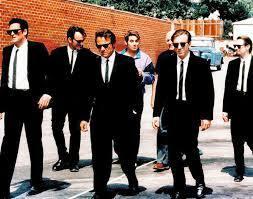
Film enthusiast and former video store employee Quentin Tarantino gets his first big break when Reservoir Dogs debuts at the Sundance Film Festival. Miramax picks it up for distribution, but with a budget of $1.2 million it only grosses $2.8 million (converts to $5.6 million at current ticket prices). It was a big hit in the UK, though, and helped Tarantino to get True Romance and Pulp Fiction made in 1993 and 1994.
1994 -
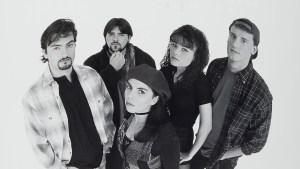
Kevin Smith maxes out multiple credits to make Clerks, filmed in black and white at actual stores which used to employ him as a clerk. Miramax buys it at Sundance, and after costing $257,000 to make it pulls in $3.1 million (that’s like $6.2 million at current prices) in North America. Smith would never rise above his cult following despite getting an animated Clerks show on ABC, and a summer long series of commercials on MTV. However, he would continue making film with Miramax set within the same fictional universe as Clerks for several years
1995 -

Former Entertainment Weekly production assistant Ed Burns writes, directs, and stars in The Brothers McMullen, with a story based upon his own Irish Catholic background. They filmed most of the movie at Burns’ own family home. Sundance audiences love it, and 20th Century Fox makes $10 million (that’s like $20 million at current prices) from its eventual theatrical run. Keep in mind it only cost $23,000 to produce. This made one of the most profitable independent films ever at the time. In fact, this was the first release of Fox’s arthouse subdivision called Fox Searchlight Pictures.
1996 -
Robert Redford launches the Sundance Movie Channel in a partnership with Showtime, serving as a premium pay cable channel. Despite the name similarities, the Channel has nothing to do with the Sundance Film Festival or Sundance Institute, though it, too, focuses on showcasing independent film.
1998 -
Trey Parker and Matt Stone use their film festival experiences to make the “Chef’s Chocolate Salty Balls” episode of South Park, which gives satirical voice to many of the criticisms of Sundance. A running joke is that indie films at festivals are always about gay cowboys. This would be made prophetic when the ultimate gay cowboy movie Brokeback Mountain came out in 2005.
1999 -
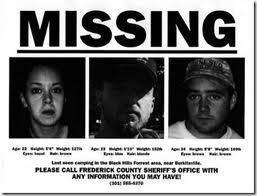
Three University of Central Florida filmmakers predict the current found-footage craze in the horror genre with Blair Witch Project, which they made for less than $1 million, sold to Artisan Pictures at Sundance for $1.1 million, and watched it become a cultural phenomenon, grossing $140 million in North America (that’s like $231 million at current prices). It ended with a total worldwide gross of $248 million.
2000 -
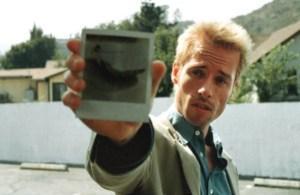
A pre-Batman/Inception Christopher Nolan premiered his second ever film Memento to great applause at multiple international film festivals, earning standing ovations and securing foreign distribution. However, while Sundance audiences similarly loved it the American distributors thought it was too complicated. So, Nolan’s team decided to just distribute it themselves in North America. This is a case where Sundance actually enhanced the profile of the title but failed to secure it distribution. It worked out. Even without a traditional North American distributor, Memento grossed $25 million (that’s like $37 million at current prices) while costing $9 million to produce.
2004-
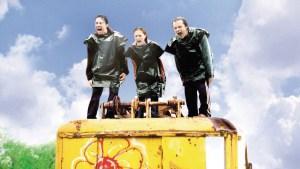
Two years into his run as J.D. on Scrubs, Zach Braff writes and directs the ultra-twee Garden State, which premieres at Sundance and is bought for double its production budget by Fox Searchlight and Miramax. It goes on to gross $26 million (like $36 million at current prices) in North America, $36 million worldwide after costing only $2.5 million to make. It also becomes both the best and worst thing to happen to the career of the band The Shins who, contrary to Braff’s argument, ARE NOT guaranteed to change your life just from listening to them.

The bigger hit from that year’s Sundance was Napoleon Dynamite, which only cost $400,000 to make and ended up making $44 million (like $59 million at current prices) for Fox Searchlight who acquired it after its Sundance premiere.
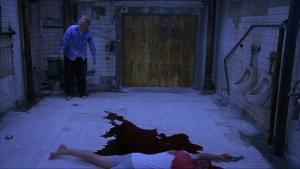
But, wait, there’s more. 2004 was also the year of James Wan’s Saw. Lionsgate actually purchased worlwide distribution rights the night before its Sundance debut, where it played for three nights straight. Lionsgate was going to release direct-to-video, but the positive response at Sundance caused them to change their plans. Good thing, too. It only cost $1.2 million to produce, and made $55 million in North America, $103 million worldwide.
2006 -

Little Miss Sunshine was made for $6 million, but Fox Searchlight loved it when it premiered at Sundance they gave it one of the richest deals in Sundance history. Their investment was rewarded when not only did Sunshine become a box office hit ($59 million domestic/$100 million worldwide) but also emerged as an unlikely heavy awards contender, taking home Best Original Screenplay and Best Supporting Actor at the Oscars.
2009 -
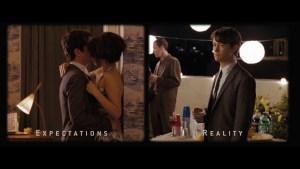
Future The Amazing Spider-Man director Marc Webb makes his directorial debut with (500) Days of Summer, starring Joseph Gordon-Levitt and a pre-New Girl Zooey Deschanel. It only cost $7 million to produce, but after Fox Searchlight bought it at Sundance it grossed $32 million in North America, $60 million worldwide.
Other movies to get their first major exposure at Sundance include Moon, In the Bedrooom, El Mariachi, and Thank You for Smoking.
There are so many other major festivals - Telluride, Toronto, Cannes, etc. Even Slamdance is around, trying to hijack Sundance’s audience at Park City with more varied and independent content. Plus, it’s completely weird how Sundance transforms Park City into a mini-version of Los Angeles for 10 days. That town only has a population of 7800 residents as of 2010 Census figures, yet the Festival draws crows of over 40,000 people. However, it still has Robert Redford attached, and that name still means something.

